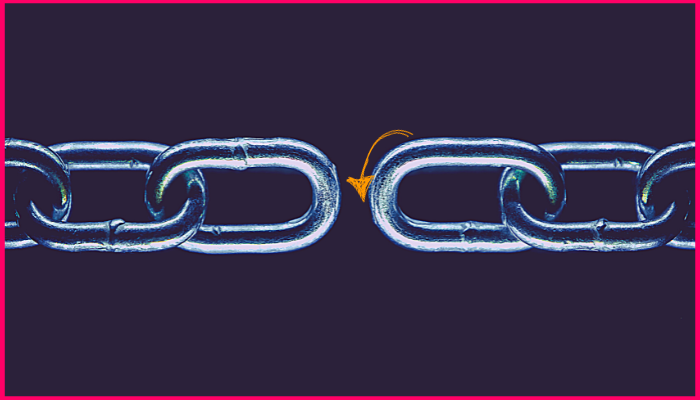How Data Harmonization Gives Retailers a Competitive Edge
You have a wealth of data – product catalogs, inventory, consumer research, syndicated data, point-of-sale (POS) data, customer surveys, vendor portals, in-store audits, market trends – but it’s likely disorganized and siloed.
⛔ The problem: Data is delivered at different times, with a variety fields and formats. That means missed opportunities, wasted resources, and ineffective results.
✅ The solution: Data harmonization. Transform your disparate data sources into a cohesive, unified whole.
Data harmonization is the process of bringing together and standardizing diverse sets of data from different sources, formats, and structures to create a unified and consistent dataset. The goal is to ensure compatibility and coherence among your data elements, so it’s easier to analyze and learn.
In the context of retail operations, data harmonization helps retail organizations establish a common framework that enables more accurate analysis, reporting, and decision making. A reliable dataset gives you a view into business operations and supports growth initiatives like competitive intelligence and price optimization.
In this post, we’ll guide you through the power of data harmonization and how it can unlock enhanced competitiveness and strategic decision-making for your retail business… 🔓
Understanding Data Harmonization
Once upon a time, data sat in siloes across retail organizations. Making strategic decisions based on unusable data meant intuition drove pricing, promotional events, and selection. Today, retailers have automated approaches to turn data into insights, reshaping the way price, promotion, and selection decisions are made.
Today’s most competitive retailers continuously engage in data harmonization across a spectrum of sources — from CRM inputs to flyers, from ERPs to e-commerce product pages, from physical shelves to mobile apps and panel data. Data harmonization is a critical part to a retailer’s success (and growth). With it, you gain complete visibility, you draw better insights, and drive growth.
Revolutionize your approach to retail strategy with the dynamic process of data harmonization. Gain the ability to:
- Identify opportunities and risks in your strategy and against the market.
- Pinpoint profitable categories and untapped price zones or customer segments.
- Predict behaviors and adapt your strategies in real-time.
- Optimize pricing, promotions, and inventory management for maximum impact.
- Make data-driven decisions that propel profitability and growth.
Data Harmonization Enhances Competitive Intelligence
Combining data sources gives retailers more visibility into the competitive landscape. Competitive intelligence is fueled by its data inputs. With high-quality fuel, the more accurate the insight. For accurate retail competitive intelligence, you need to trust your incoming data. The output is a 360-degree view of your competitive landscape.
🌐 Data harmonization is more than just a technical process; it’s the cornerstone for reliable competitive intelligence. Here’s why data operations are critical for successful competitive intelligence:
1. Accuracy and Reliability: Your data sources often use different images, unit of measure, and product descriptions. Data harmonization cleans and standardizes this data, ensuring accuracy, consistency, and reliability for analysis. This eliminates confusion and enables you to trust the insights derived from the data.
2. Meaningful Comparisons: Inconsistencies make product linking a difficult process. Data harmonization creates a common format across competitive catalogs, allowing for accurate comparisons across exact and similar products. This allows retailers to identify opportunities and risks to make data-backed decisions.
3. Increased Efficiency: Data harmonization saves time and money by reducing the need for manual data cleaning and manipulation. A single source of competitive data eliminates the need for you to spend time reconciling discrepancies. Now, retailers can focus on analysis and insights which improves efficiency.
4. Remove Silos: Harmonized data ensures everyone in your organization is working with standardized information. This allows for clearer and more effective communication of insights and enables alignment across different teams within the organization.
Collect & Match

Analyze
Act
“Unifying data is the number one productivity hack for retailers.” -Jose Luis-Gomes, Google
Brand & Category Normalization
Your goal is to create growth. You can create growth when your data helps you draw clear conclusions. When you analyze data and can say “If I do x, then y will happen” you are building a foundation of loyalty, competitiveness, and profitability.
For years, Bungee Tech has been working hard to solve retailers’ biggest challenges. One reason data harmonization is difficult is because retailers don’t categorize brands or categories in a standard format or in the same sequence.
Let’s say you’re looking at competitive retailers for information about a particular dog spray deodorizer. At Retailer A, the spray might be listed with a partial brand name while Retailer B lists the spray under the manufacturer name only.
Take this example: Oreo cookies might fall under “snacks” or “cookies” or even “groceries” depending on the retailer.
Talk about a time consuming task to normalize and standardize all of the products you want data for…
Fortunately, Bungee Tech’s competitive intelligence and product matching offers you one harmonized version of the truth for easy comparison. (Talk to our team to learn more»)
Linking Competitive Intelligence to Price Optimization
Now, here’s the game-changer. 🎲
Envision the possibilities when competitive intelligence is a direct input to your price optimization. The dynamic integration allows retailers to proactively respond to market shifts, capitalize on pricing opportunities, and effectively execute strategies. Armed with insights derived from your competitive landscape, retailers can find-tune pricing strategies, identify the best time for promotions, and ultimately hit their growth and profitability goals.
Here are some unique elements you’ll love by linking competitive intelligence to your price optimization solution:
🚀 Create a price rule based on real-time information about your biggest competitor.
🚀 Measure the sales impact of similar competitive price changes over time.
🚀 Identify outlier pricing and out of stock pricing anomalies.
Next Steps
You can’t craft a winning competitive strategy without data harmonization. And your price optimization results with soar with connection of competitive intelligence. After all, data is made even better with mapping, matching, and analysis.
The growing integration of artificial intelligence in price optimization solutions is enabling retailers to analyze vast datasets and derive actionable insights for more accurate pricing strategies. ML-driven data collection, product matching, and optimization represents a shift towards data-driven decision making that will help forward-thinking retailers soar in a highly competitive landscape.




